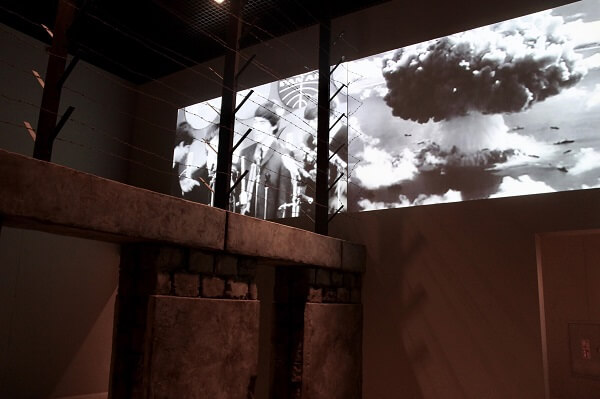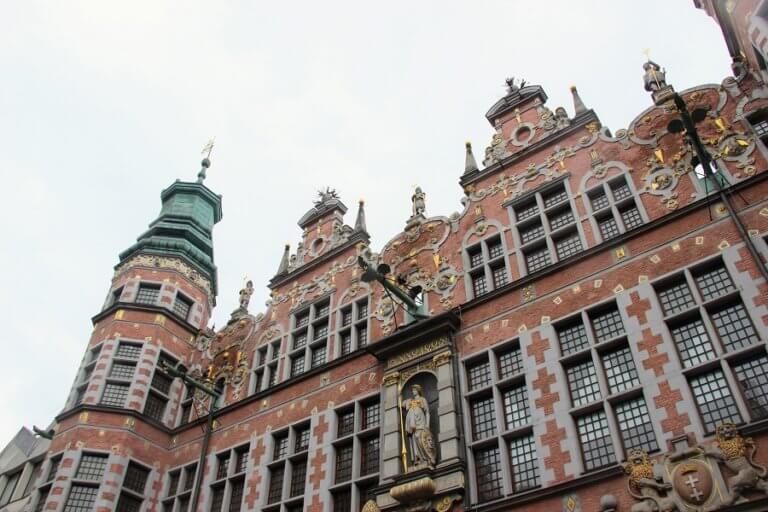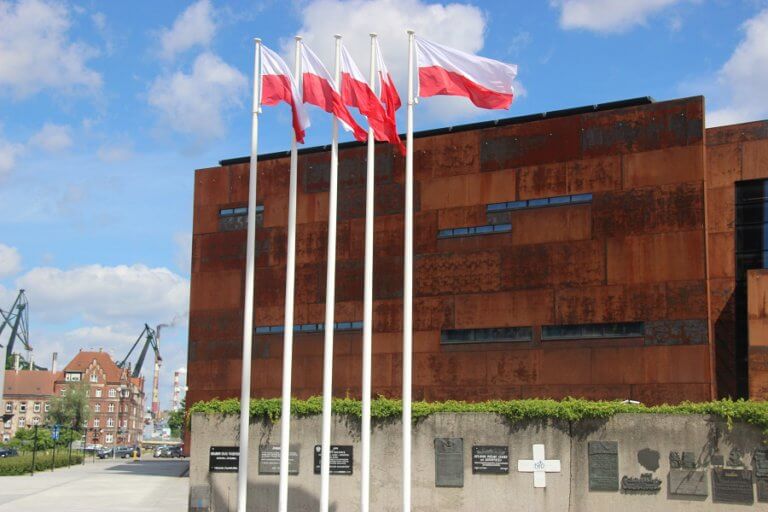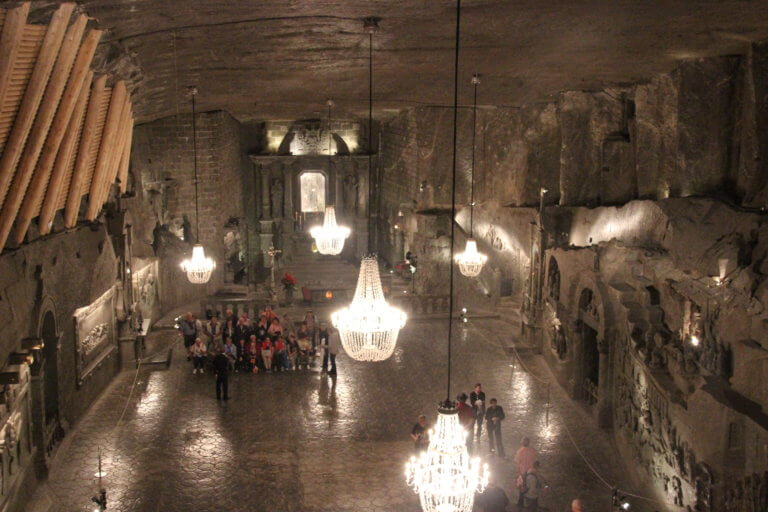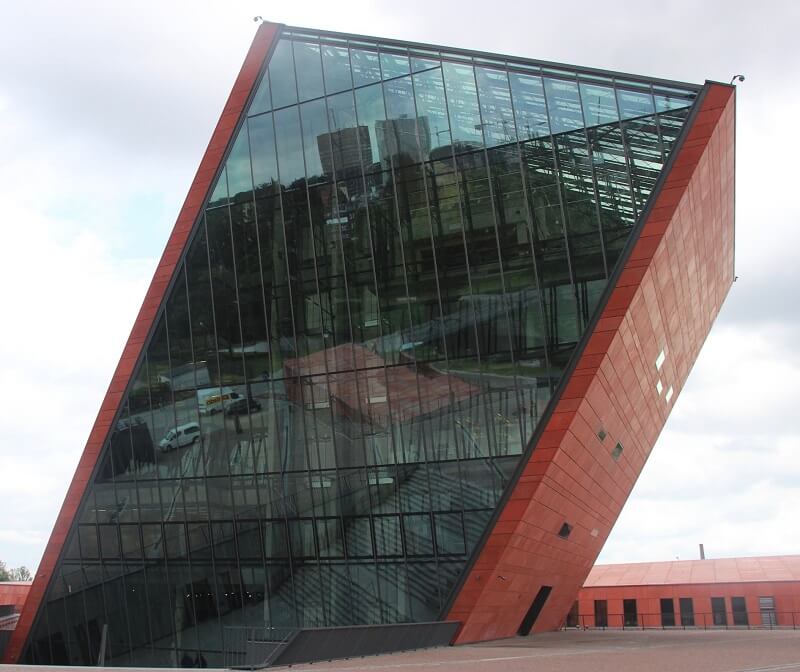
Day 113 7th June 2017
How could you not? A museum housed in a breathtaking purpose built building. With controversy surrounding its management – even before it opened. In a city where the war began – the second world war. Where tantalising few tickets per day are available. Visit we must.
Looking back over our time in Poland, museums feature extensively with good reason. We both like history; albeit from different angles (in simple terms personal and political). And the museums we have seen are incredible – an engaging, audio visual feast. This museum was the giant among giants.
We had asked the staff at the Tourist Information which museums they would recommend in Gdansk. As top picks one staff member said the History museum (which we did not get to) and the other recommended the new Museum of the Second World War. Maybe not we thought – thinking of how much of our travels in Poland already had focussed on that war. And how much of the history we had heard, and learned throughout our lives – being post war babies of that second World War.
Through research – the Second World War museum itself has an extensive website – and the travel stories of others we discovered this museum had only opened in March this year and the building alone made it seem worthwhile. This visit was confirmed as we gazed out our apartment window one evening and saw the top of the very familiar museum building within our immediate neighbourhood.
Having made this decision, and decided we would visit on our final day in Gdansk we learned a valuable lesson – almost too late. Doing some early morning pre-reading we discovered tickets were available online – give it a try we thought – none were available for the day. Given we were staying within eye sight of the museum we decided to visit early and see if we could get tickets in person. No tickets left for the morning – thankfully we were able to purchase two for the afternoon session.
Top travel tip – buy museum tickets (and any other tickets) online, ahead of time -especially in season! It prevents disappointment and queuing.
The upside of visiting several times in the search for tickets was that you are continually mesmerised by the building. From every angle it is different and powerful as you walk towards and around it. This continues inside in both the building and the displays. Outside it reaches up at angles towards the sky, the glass side reflecting the outside and the inside. Once inside the building it is more austere – a mixture of peacefulness and menace.
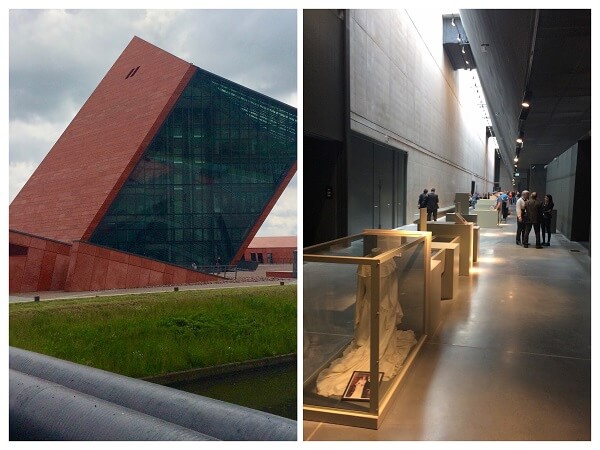
It seemed hard to believe (apart from feelings of hunger and thirst) that we stayed over five hours. We both agreed it to be the best museum experience ever had. Devastating, exhausting, shattering, but essential.
The early part of the exhibition was an introduction to the world post first world war, pre second world war: the leaders, the tyrants, the politics, the aftermath of war, and the build up to the wars across the world – before focussing more on Poland. This was a unique piece of the exhibition, and an invaluable help in understanding the world at that time – covering beyond Germany to other parts of the world including Japan.
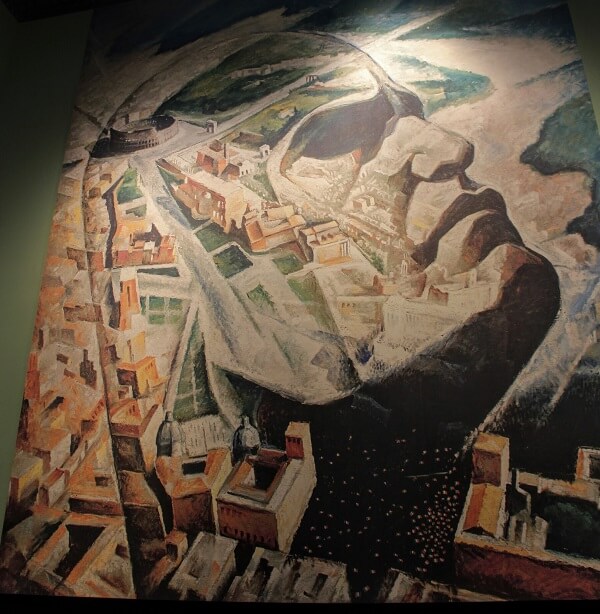
The displays followed a pattern that we had seen in the other Polish museums with much ingenuity, technology and audio visual experiences put into the exhibits – recreating often life size environments. Immersing the visitor in the experience.
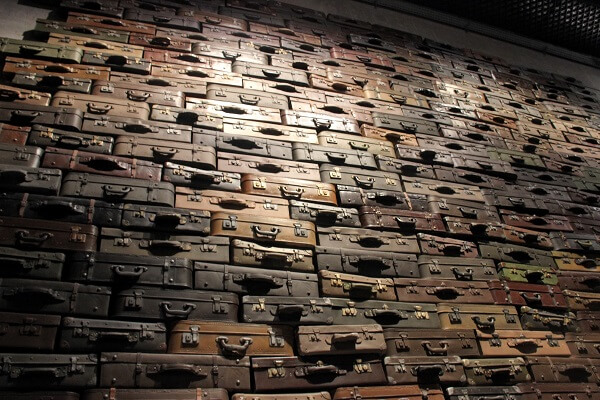
Eighteen separate rooms for each part of the story each telling the global picture with personal stories. Often supported by huge installations. Putting the visitor in the centre of the experience, aided by a perfect audio guide. At times it was almost too much to witness however the central hallway off which the rooms ran provided a haven of lighter exhibits down the centre and quiet spaces to sit in the purposely dimly lit space.
And quiet thinking spaces were essential as one confronted messages about how human beings become able to treat others so devastatingly inhumanely. While the specifics of countries at war were described the message were more universal. One also realised that for Poland the end of the war was not the end of their suffering.
The museum offered an “as much as you want and need” approach, reinforced by the audio guide suggesting where you might spend extra time. Source documentation, personal insights, interviews, memorabilia and exhibits relating to each topic enable extra learning if you wanted it. It might take many visits to cover it in its entirety – five hours later we had only tipped the surface.
The final room brings one through the world from wars end to current day. A reminder …
Apparently controversy surrounding the status of the museum continues – seemingly a dispute between the government and the museum management. The government apparently wishes to merge this with another museum. It would seem a pity if a museum that so clearly and vividly describes the outcomes of engendering hatred, of totalitarianism and the impact of dehumanising others was to be changed or worse closed.
We also read a suggestion that part of this dispute is that the museum was thought to not focus on Poland enough. For us to begin with the origins of the World war and the impact across Europe gave context to what happened in Poland. It was also a reminder – for us from long ago history lessons – that the European war began with the German invasion of Gdansk – Poland and fitting that this remarkable museum lives in Gdansk.
As we left dazed, informed, and eaten up with thoughts we walked towards the water and bringing us right back to the present on a beautiful sunny day was a boat entering the harbour meaning the large drawbridge was being taken up. We Love Gdansk!
